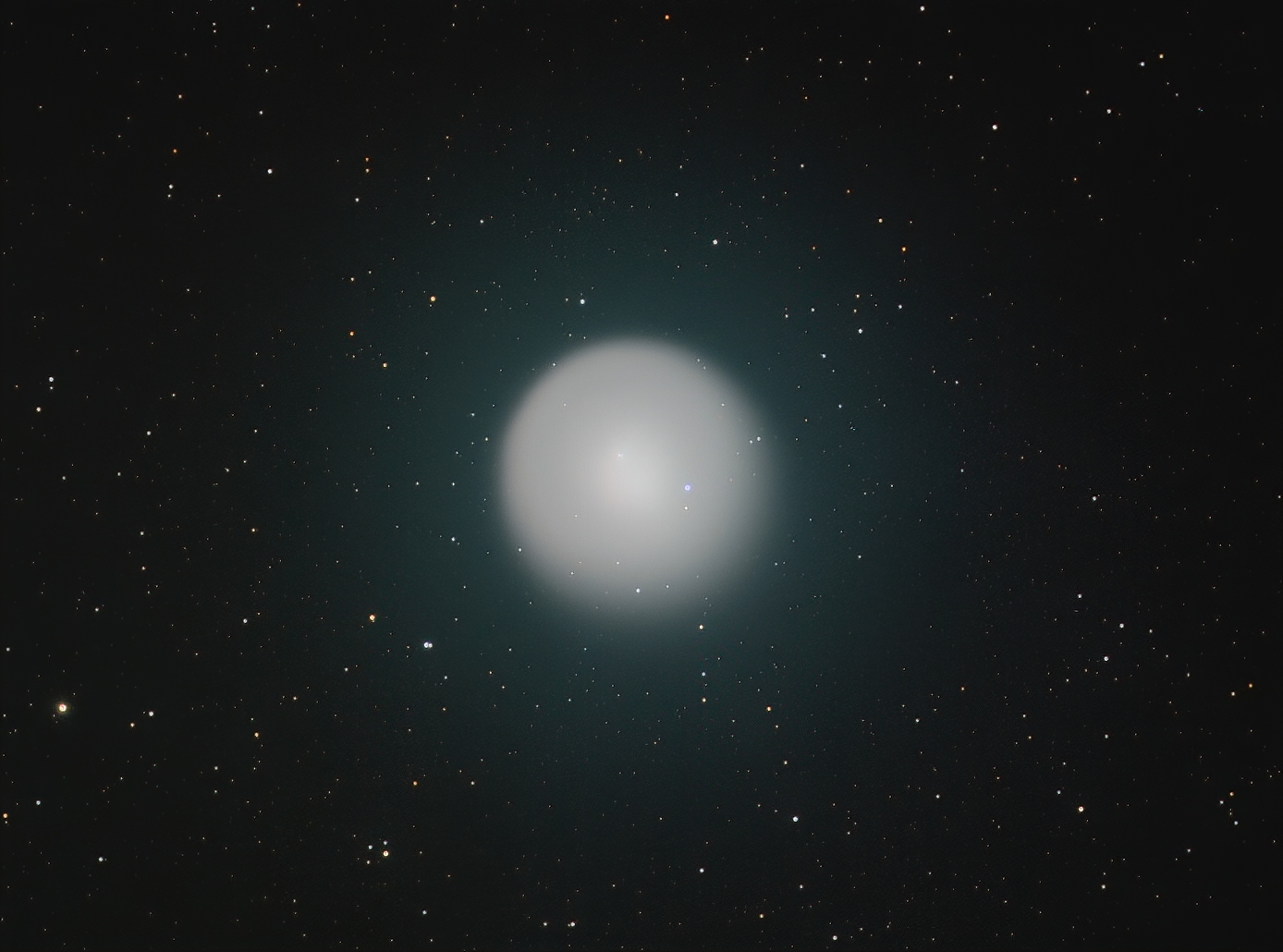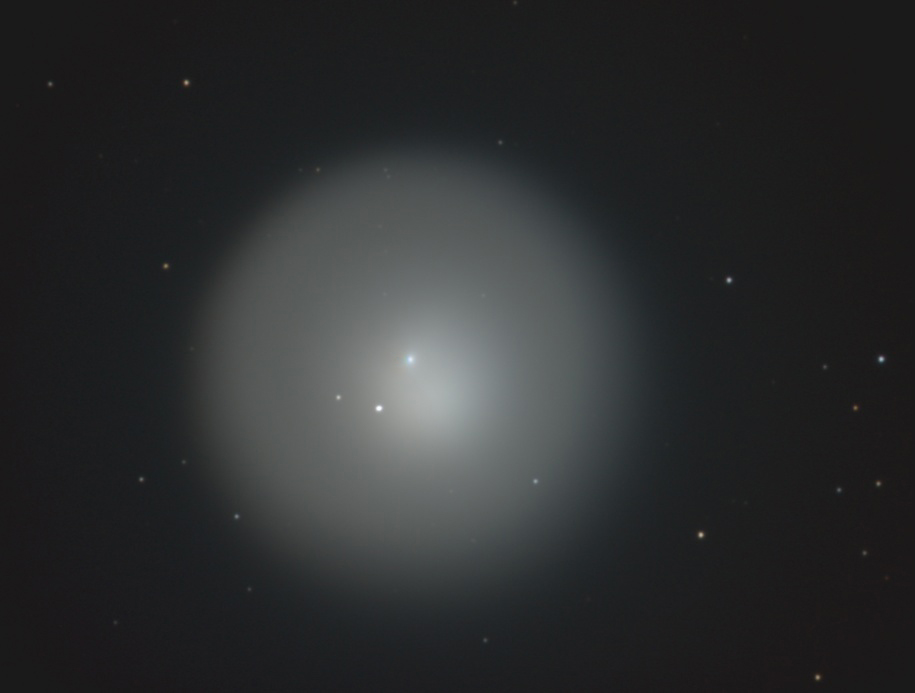Comet 17P/Holmes
From the author of Sizing Up The Universe

R, G, B, L frames aligned on the stars.
21:01--21:15 EDT, Nov 01, 2007
Starlight Express SXV on 4" Tak FSQ-106
L = 6 x 10 second, R = 5 x 10 second, G = 16 x 10 second,
B = 7 x 10 second
21:32--21:45 EDT, Oct 28, 2007
Starlight Express SXV on 10" RC
L = 13 x 4 second, R = 1 x 10 second, G = 8 x 10 second,
B = 10 x 10 second
R, G, B, L frames aligned on the stars.

In 1898, an English astronomer named Edwin Holmes discovered a comet in the constellation Andromeda. It was named Comet Holmes in honor of its discoverer. On October 24, 2007, this comet was a faint speck between the orbits of Mars and Jupiter, visible only in the largest telescopes. Then, suddenly, in a matter of a few hours, it increased in brightness a million-fold, and became a naked eye object visible in heavily light-polluted cities. It is not clear what caused this eruption, since comets ordinarily do not increase in brightness until they are near perihelion (closest distance to the Sun) where solar radiation strips away and illuminates tons of dust and gas. Comet Holmes traverses a 7-year elliptical orbit around the Sun. At aphelion (farthest distance from the Sun) it is near the orbit of Jupiter. At the time of its eruption, Comet Holmes was near opposition, meaning that it was on the opposite side of the Sun from the Earth. Since a comet's tail is caused by the Sun's radiation, it always points directly away from the Sun. In the case of Comet Holmes, this means that any tail would have been behind it from the perspective of planet Earth. The result was a circular, tail-less apparition. Comet Holmes has an estimated core diameter of two miles. However, at the time of its eruption, its apparent diameter expanded to more than 600,000 miles, or twice the mean distance of the Earth to the Moon, and nearly 80% of the diameter of the Sun.